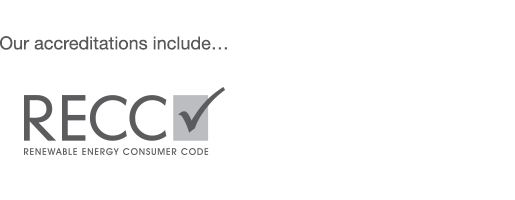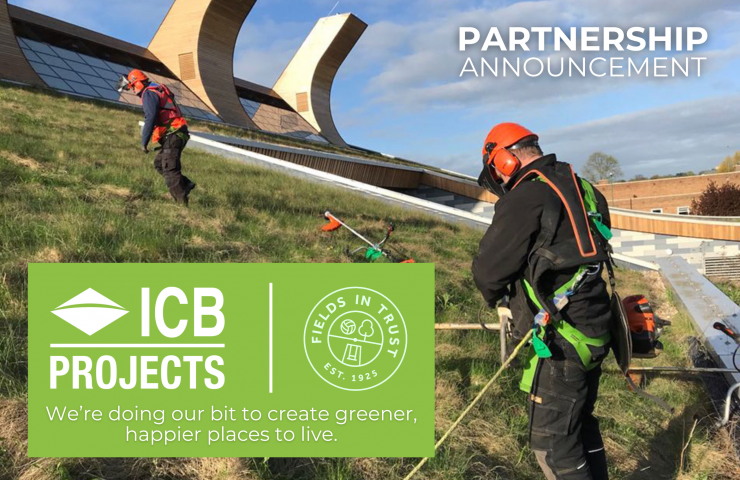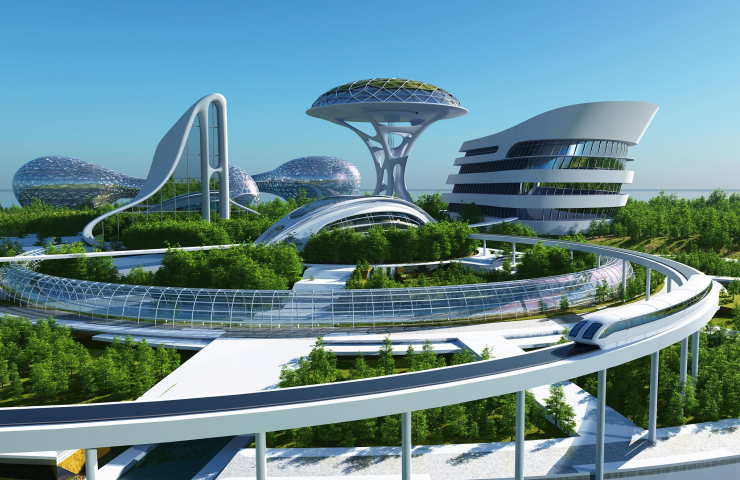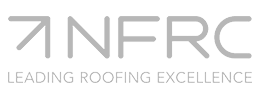Green roofs & net zero emissions
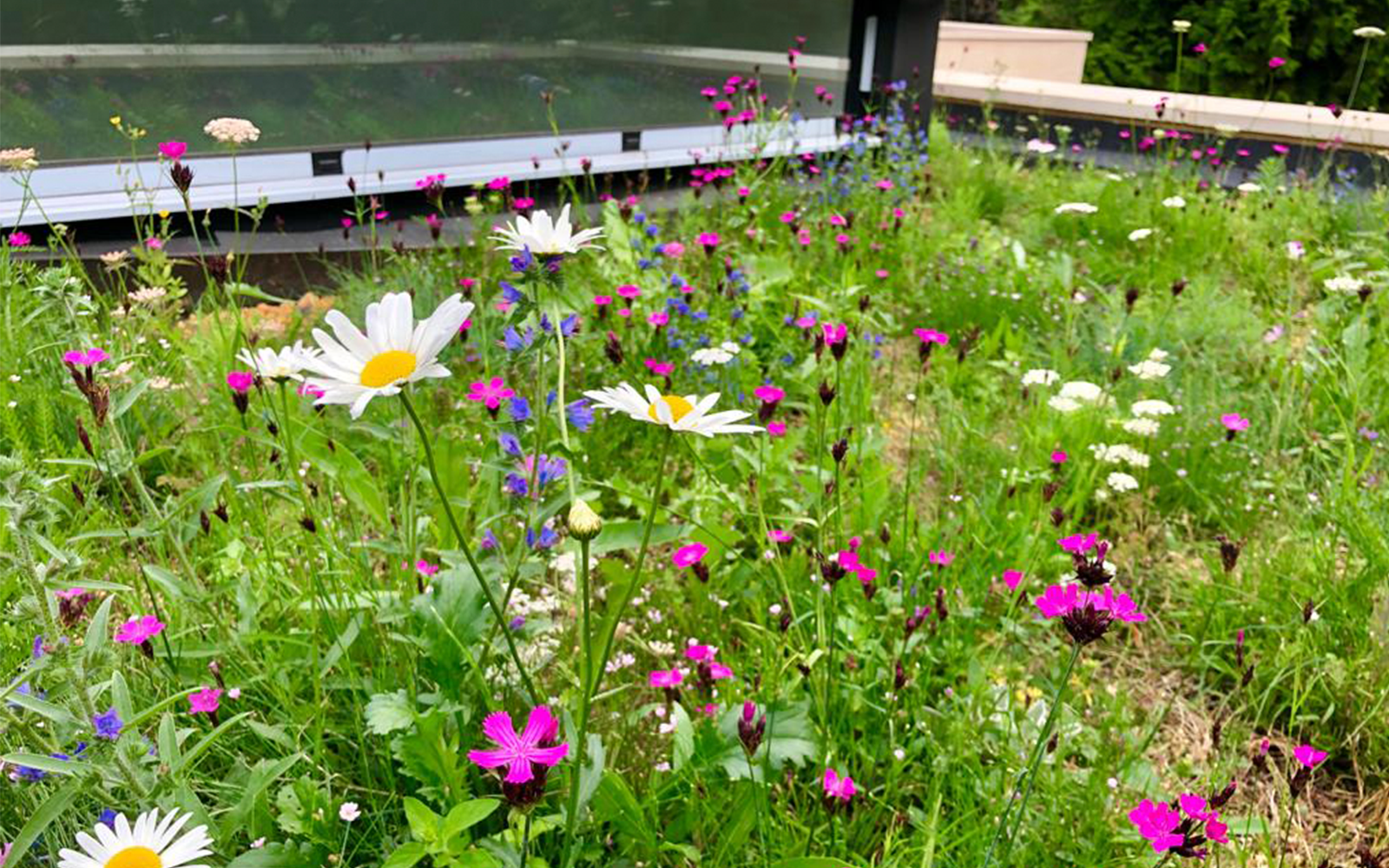
When it comes to chasing the global goal of sustainability, green roofs have become a major step in shaping sustainable urban landscapes. These living rooftops have significantly contributed to lowering carbon emissions and achieving the long-sought-after goal of net zero emissions.
Below this piece, we’ll explore how green roofs contribute to this goal and why architects should consider incorporating them into their projects.
CARBON SEQUESTRATION
As a living system, green roofs have the capability of storing carbon dioxide (CO2) in their biomass during the process of photosynthesis. By covering rooftops with a green roof, carbon from the atmosphere will be deposited into roots, leaves and stems, acting as a carbon sink where it is stored and later deposited into the soil/substrate. This process directly offsets carbon emissions produced by buildings and urban activities, reducing overall greenhouse gases.
REDUCING THE URBAN HEAT ISLAND EFFECT
The Urban Heat Island Effect (UHIE) – urban areas that experience elevated temperatures in comparison to nearby rural areas due to the infrastructure absorption and re-emission of the sun's energy.
‘Summers by 2050 will be 1.5 – 3.5ºC hotter…in central London. The urban heat island currently adds 5 – 6ºC to summer night time temperatures and this will intensify in the future.’
– The London Climate Change Partnership: London’s Warming – The Impacts of Climate Change on London
This effect is primarily due to the extensive use of concrete, asphalt, and other materials that absorb and retain heat. Green roofs help mitigate this effect in several ways:
Insulation: The vegetation and substrate layers provide natural insulation, reducing heat transfer through the roof.
Evapotranspiration: Plants release water vapour through their leaves, cooling the air around the building and providing cooler temperatures at roof level.
By lowering the temperature in urban areas, green roofs reduce the need for air conditioning in buildings, leading to lower energy consumption and associated emissions.
ENERGY EFFICIENCY
Buildings nowadays are carefully planned and designed to maintain high energy efficiency. However, installing a green roof can significantly improve this efficiency through its natural ability to harness the sun’s energy.
The additional insulation provided by the vegetation and growing medium helps cool the building and maintain consistent indoor temperatures. This leads to reduced energy demands for heating in the winter and cooling in the summer.
Studies from Nottingham Trent University revealed a significant difference in winter and summer temperatures below the waterproofing on a green roof when compared to a conventional roof.
- Air temperature 0 oC/18.4 oC
- Temperature under membrane of conventional roof 0.2 oC/ 32oC
- Temperature under membrane of green roof 4.7oC / 17.1 oC
STORMWATER MANAGEMENT
As proved by the flash floods in London a few years back, urban areas often struggle with managing stormwater runoff due to inadequate drainage systems, which can lead to flooding and water pollution.
Green roofs are effective at absorbing and retaining rainwater, which is then used by plants or slowly released back into the atmosphere through evapotranspiration. The excess water that the vegetation cannot absorb, is gradually dripped back into the drains. This process reduces the volume and speed of runoff, easing the burden on urban drainage systems.
Effective stormwater management also means less energy is required for water treatment processes, indirectly contributing to lower carbon emissions. Green roofs will filter a large portion of the pollutants in the water, specifically heavy metals. This maintains healthier ecosystems and improves water quality.
BIO-SOLAR ROOF SYSTEMS
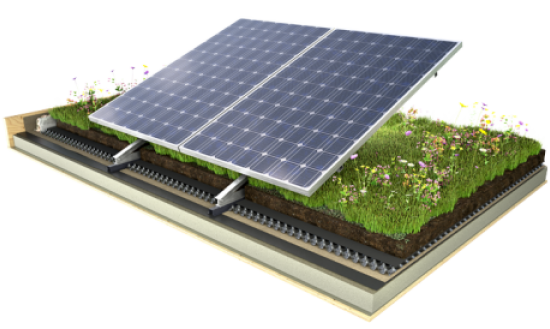
The ever-expanding technology in sustainable living has integrated solar panels with green roofs to create a Bio-Solar roof system. These systems provide the best of both worlds. Solar panels with energy-generating capabilities and a habitable roof capable of increasing biodiversity and improving water retention.
As solar panels become less efficient with exceeding temperatures, studies show that mounting them onto a green roof can cool them up to 21°C, thus increasing the power-generating benefits of the solar panels.
You can learn more about how ICB Projects can help you with the installation of a bio-solar green roof here or get in touch with our team to discuss your next project.
PLANNING PERMISSION WITH GREEN ROOFS
Deciding to go down the green roof route can help with the approval of any planning permission for a new build. They can assist with the criteria needed and contribute to broader community and environmental goals.
It’s a good idea to consult with the local planning authorities in the early stages so that a property can be inspected and made sure it’s suitable for a green roof.
CASE STUDIES AND SUCCESS STORIES
THE GARDENS BY THE BAY

Singapore's Gardens by the Bay is a prime example of integrating green infrastructure into urban design. Opened in 2012, the 101-hectare Gardens are a fusion of nature, art and technology called the Supertrees. Towering vertical gardens rising to 50 meters above the ground. As well as being a fascinating landmark, they are the environmental engine for the Cooled Conservatories, containing devices for water harvesting and storage, photovoltaic arrays, and solar collectors.
Whilst the photovoltaic cells that harvest solar energy can be utilized for lighting, over 226,000 plants comprising more than 200 species and varieties are planted on the 18 Supertrees. Their environmental technology allows them to absorb rainwater for use in irrigation and fountain displays as well as cool the surrounding air and absorb carbon dioxide.
THE DURLEY ENVIRONMENTAL INNOVATION HUB IN DURLEY CHINE BEACH
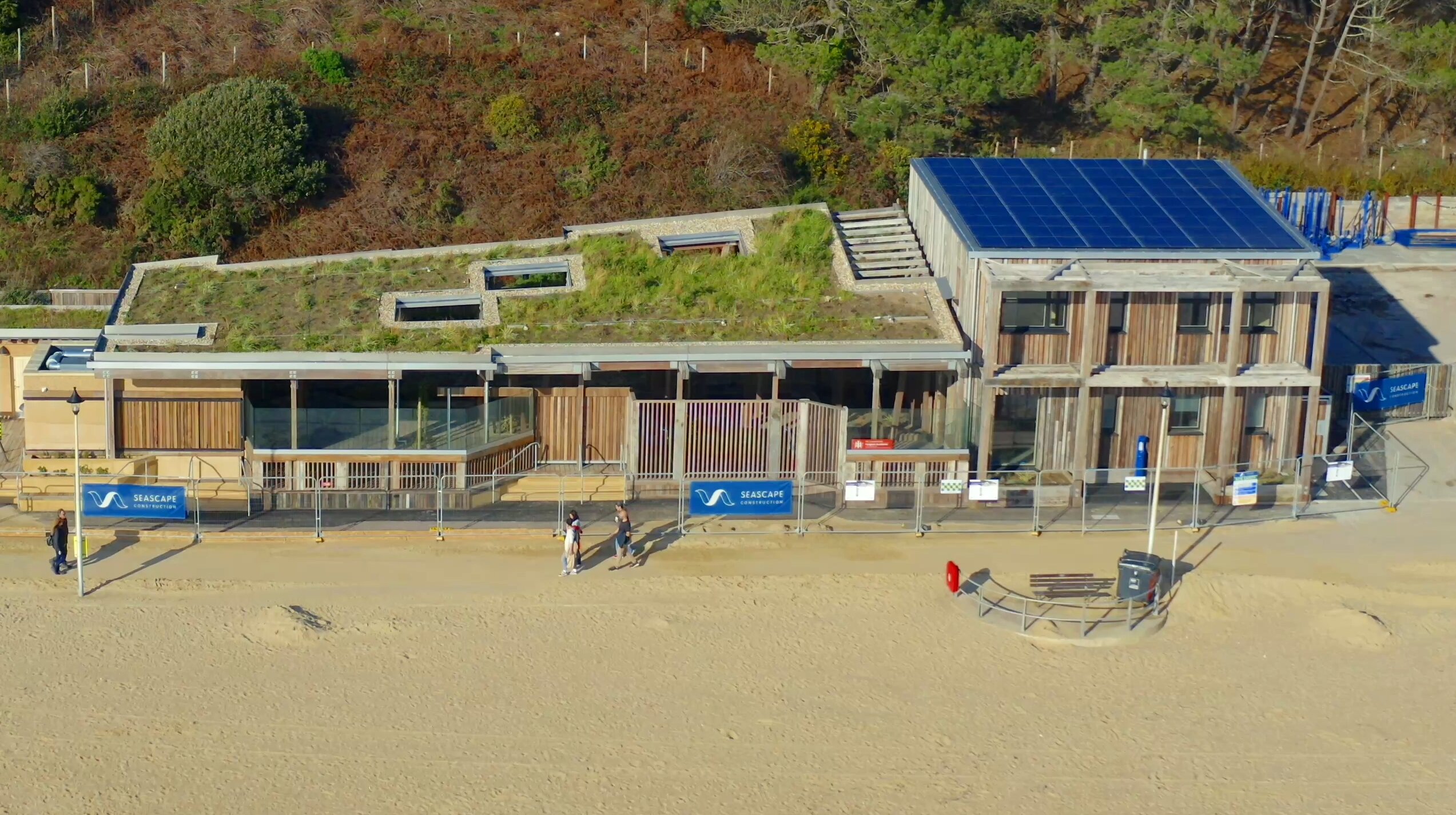
The Durley Environmental Innovation Hub, located on the beautiful beachfront, is an inspiring, public education destination dedicated to achieving a change in reducing waste and eliminating single-use packaging along Bournemouth, Christchurch, and Poole’s beautiful seafront.
The hub features a wildflower green roof supplied by ICB Projects, which allows for natural irrigation of the planted beds below. Surface water runoff is controlled, and the green roof supports local wildlife, including insects and birds, which conserves the local species and enhances the ecological value of the area.
TO CONCLUDE
Green roofs play a pivotal role in the journey towards net zero emissions. By sequestering carbon, reducing energy consumption, managing stormwater, and mitigating the urban heat island effect, green roofs offer a comprehensive solution to some of the most pressing environmental challenges.


